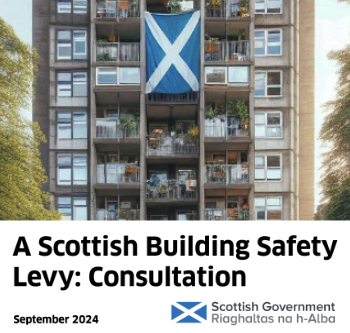Tendering is not just pricing
Over recent years the variety of construction procurement methodologies have increased considerably, opening more procurement options but especially for complex projects that require much more attention and precision than standard projects. (See Gatwick Airport case study). Consequently the manner of tendering for projects has had to change accordingly. The traditional emphasis on price as the principal evaluation criteria has evolved whereby clients generally consider far more variables affecting not only the quality of the final building but also its performance over time.
Tendering procedures can be long and complex, and contractors have to be geared up to follow the rules strictly in order to produce often comprehensive and technically detailed submissions. Deviations from the rules may disqualify your bid, so it is vital that if you choose to tender, your work is not wasted simply by failing to adhere to procedural requirements. Any tender must also demonstrate to the client, and the contractor’s senior management, that the contractor is capable of undertaking the project in accordance with the stipulated conditions and the parameters that the contractor has set out himself, such as design considerations, resource availability, timescales etc.
This article sets out some of the issues contractors may want to consider when preparing a tender submission aside from completing the Pricing Document.
Firstly always ensure that you thoroughly read the tender documents before you start work. As Simon Tolson of Fenwick Elliott states:
“Whilst it may seem an obvious precaution to read tender documents very carefully, in my experience it is surprising how, time and again, contractors get into difficulties because they do not follow this basic rule.”[1]
This initial stage is vital as it not only identifies the tendering procedure to be followed but also various other criteria which need to be considered by the contractor, for example the programme of works, design solutions, life cycle criteria etc. This stage will also help identify any immediately obvious issues, such as those we found in Chalk Lane project, which could raise red flags or even lead to a contractor withdrawing from the process. These could include overly burdensome contract amendments, risks associated with existing buildings, unrealistic technical requirements or tolerances etc.
The contractor should pay particular attention to the tendering rules and evaluation criteria. Given that price is not always the principal evaluation criterion, the client’s evaluation methodology must be fully appreciated. The scoring system should be reviewed carefully so that if, for example, life cycle considerations form a major part of the final evaluation, the contractor has dedicated sufficient time and resource to developing satisfactory proposals for this aspect of the bid.
There are a variety of different evaluation and award criteria used today including:
- MEAT (Most Economically Advantageous Tender) which considers not only price but also quality in accordance with predetermined assessment criteria [2]
- Life cycle / whole life cost which considers whole life costings, such as acquisition, operation costs, maintenance, decommissioning etc.
- Quality, whereby scoring is based on predetermined quality criteria.
- Price
The evaluation methodology selected may comprise one or a hybrid of the above and be based on a variety of different award criteria [3].
Understanding the evaluation and scoring system will help contractors focus their efforts accordingly such that the final tender is structured and balanced in alignment with the evaluation weighting. Typical areas, apart from price, where clients may focus their evaluation and scoring may include:
Design proposals: (particularly if design and build or a design portion is required). Contractors must ensure that their proposals meet the requirements and standards set out by not only the client but also current legislation or rules of other applicable bodies. The rafts of legislation affecting building is significant and contractors must ensure that they devote sufficient expertise to demonstrating that they understand, and have considered, such matters as BREEAM, CDM, The Disability Discrimination Act etc.
The design proposals must be sufficiently comprehensive to ensure they meet any stated requirements for aesthetics, functionality, operating standards, maintenance, innovation etc. Contractors must ensure that they play a full role in understanding the design process with their design consultants, especially with new and innovative solutions, so that the contractor is confident it can provide what is required within the parameters of its bid.
Technical solutions: This can encompass such matters as standards of materials and quality checks, how the proposals achieve the client’s stated needs, management of matters such as health and safety and CDM, quality of documentation, flexibility in carrying out the works, sequencing and logistical arrangements etc.
Organisation of the Works: This includes a multitude of factors which affect how a contractor proposes to organise the works on site. The programme of works is typically one area where clients have specific requirements and expect to see a well thought out and logically sequenced flow of works. Contracts such as NEC specifically include planning requirements requiring tenderers to produce detailed, logic linked programmes which include for such matters as float and time risk allowances, the starting date, Key Dates, Completion Dates[4] etc. The days of a hastily worked up Excel bar chart programme are long gone. The Contractor will also be required to show that he can implement suitable on-site planning procedures, typically requiring dedicated planning resources.
Other issues to consider here may include identification and management of risks, organisation of subcontractors, materials deliveries, the supply of plant, and management of the working area generally to demonstrate efficiency of operations.
Management and Staff Resources: Clients frequently set out requirements to ensure the contractor has sufficient and suitably experienced staff to carry out and manage the works. This requirement may also extend to validation of key subcontractors. Certain forms of contract specifically include requirements regarding personnel. For example NEC contracts require in “Contract Data Part 2 – Data Provided by the Contractor” details of key people, which identifies their name, job, responsibilities, qualifications, and experience[5].
Clients frequently want to see how management resources are organised on site, typically by way of an organogram. This may also identify any head office management resources who are involved. Contractors need to give careful though as to how their site and management resources are to be deployed and how lines of authority and reporting, particularly back to the client, are to be implemented.
Tendering contractors should also devote sufficient time reviewing any amended terms and conditions, which we found benefitted us in our Cornerstone project. They should be sure that they are not obligating themselves to do what cannot be done or taking on undue risk for example unlimited liabilities, responsibility for unseen ground conditions etc which may make the project too risky to undertake without amendment.
Modern tendering can be a lengthy, complex and costly exercise. If contractors are looking to put in a genuine bid, they should focus on all the requisite matters and not just price whilst emphasising those sections which carry higher scores in the client’s scoring system. Contractors should look to come out of the tendering process with as much confidence as they should be giving the client, that they have fully understood the project and are able to deliver in line with the client’s expectations. If they overlook any aspect, particularly one which ranks highly on the client’s scoring and evaluation system, then the time and cost spent tendering is likely to be wasted.
[edit] Related articles on Designing Buildings
- Appointing consultants.
- Auction theory.
- Bidding tactics.
- Common mistakes in construction tenders.
- Competitive procedure with negotiation.
- Competitive tender.
- Conditional tender.
- Dutch auction.
- Form of tender.
- How to prepare tender documents.
- Invitation to tender.
- Mid-tender Interviews.
- Public procurement.
- Pre-tender Interviews.
- Pre-qualification questionnaire.
- Procurement route.
- Tender evaluation.
- Tender processes.
- Things to avoid when tendering.
- Two stage tender.
- Tender documentation.
- Tender price appraisal.
- Tender return slip.
- Tender settlement meeting.
- Variant bid.
[edit] Exetrnal references
[1] Tolson S “Procurement and Supply Contracts in the Construction Industry 2007
[2] See for example “Construction Procurement Handbook” Scottish Procurement and Property Directorate; 21 December 2018 https://www.gov.scot/publications/construction-procurement-handbook/pages/7/#page-top. This sets out various tender evaluation criteria and rules for various types of projects.
[3] As above, see for example; “Construction Procurement Handbook” Scottish Procurement and Property Directorate; 21 December 2018. Annex C Award Criteria.
[4] NEC 3 Clause 31 “The Programme”
[5] NEC 3 Contract Data Part 2 – Data Provided by the Contractor
Featured articles and news
Considerate Constructors Scheme acquires Building A Safer Future
Acquisition defines a new era for safety in construction.
AT Awards evening 2024; the winners and finalists
Recognising professionals with outstanding achievements.
Reactions to the Autumn Budget announcement
And key elements of the quoted budget to rebuild Britain.
Chancellor of the Exchequer delivers Budget
Repairing, fixing, rebuilding, protecting and strengthening.
Expectation management in building design
Interest, management, occupant satisfaction and the performance gap.
Connecting conservation research and practice with IHBC
State of the art heritage research & practice and guidance.
Innovative Silica Safety Toolkit
Receives funding boost in memory of construction visionary.
Gentle density and the current context of planning changes
How should designers deliver it now as it appears in NPPF.
Sustainable Futures. Redefining Retrofit for Net Zero Living
More speakers confirmed for BSRIA Briefing 2024.
Making the most of urban land: Brownfield Passports
Policy paper in brief with industry responses welcomed.
The boundaries and networks of the Magonsæte.
London Build Fire and Security Expo
20-21 Nov and now with new Ambassador Programme..
The Scottish Building Safety Levy
Eight weeks of consultation closing on 18 November.
The grey, the brown and the golden rules of housing
shifting policies from the wild west of housing development.
Future proofing homes that are fit for purpose
Specification challenges and the role of plastic.
Thousands of new homes unlocked for brownfield sites
£68 million to 54 councils for neglected land into new homes.
























